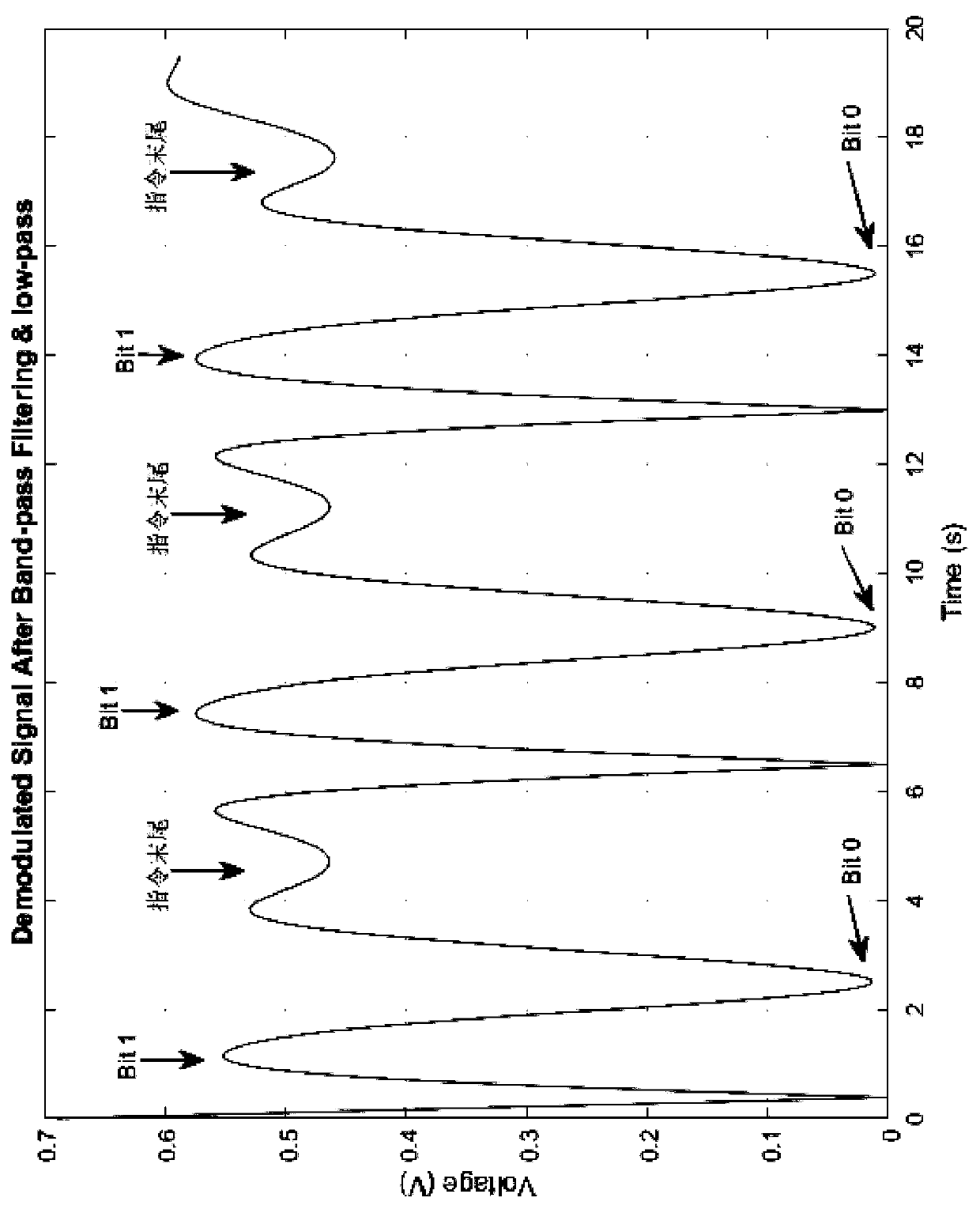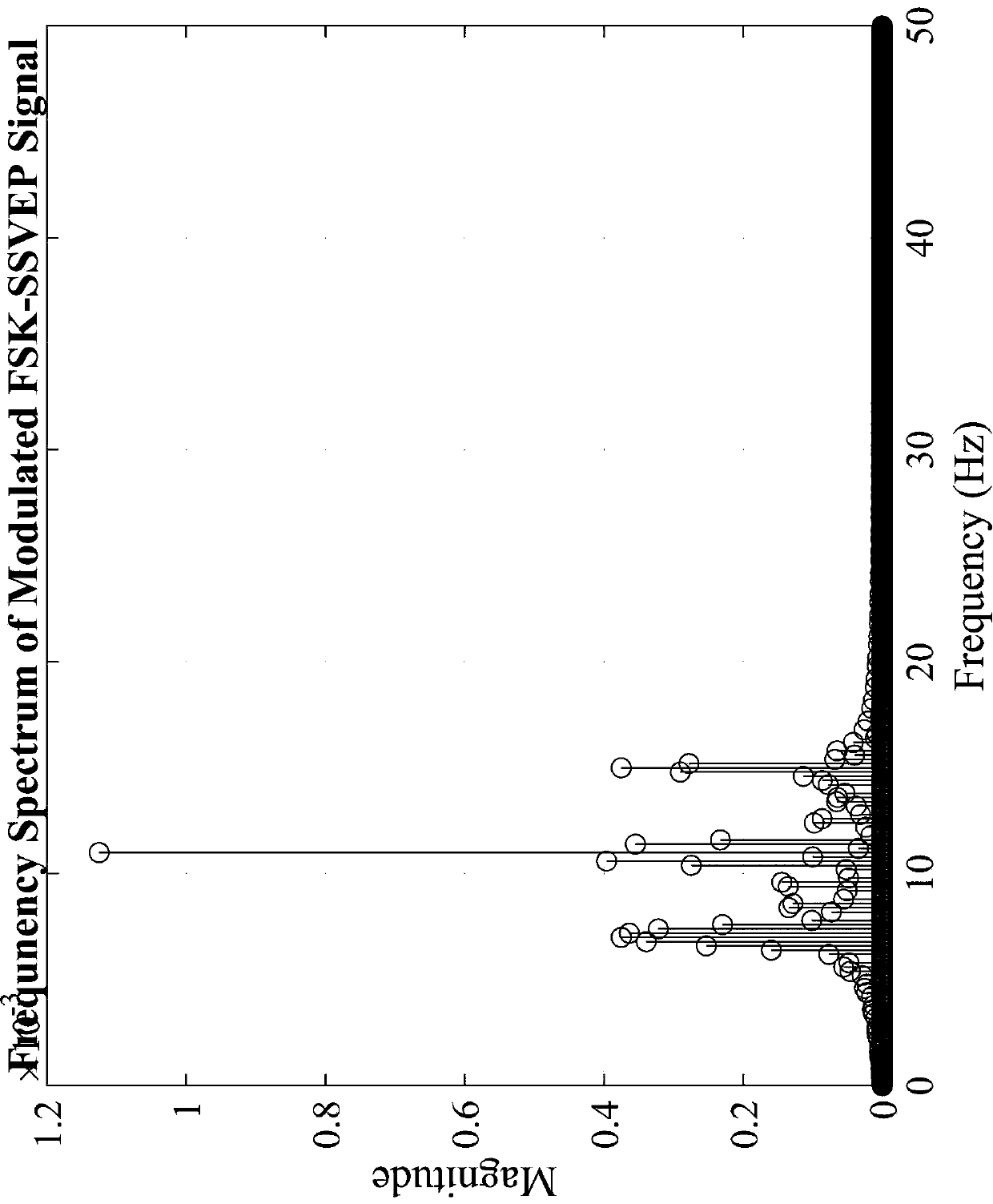Non-invasive brain-computer interface system and coding method with time-varying coding
A non-invasive, brain-computer interface technology, applied in the input/output process of data processing, input/output of user/computer interaction, mechanical mode conversion, etc. , demodulation difficulties and other problems, to achieve the effect of improving the characteristics of EEG, improving the recognition efficiency, and reducing the difficulty of demodulation
- Summary
- Abstract
- Description
- Claims
- Application Information
AI Technical Summary
Problems solved by technology
Method used
Image
Examples
Embodiment
[0028] The non-invasive brain-computer interface coding method of variable time length coding is used for the human brain to send a binary code that is easy for the computer to recognize. The human brain generates two first-stage signals with fixed frequency and fixed stimulation time length, and two first-stage signals. The signals correspond to binary codes respectively. Several first-stage signals form a symbol, and the duration of the first-stage signal at the last bit of the symbol is extended to mark the interval between symbols.
[0029]Among them, the human brain generates two first-stage signals with fixed frequency and fixed stimulation time length. The stimulation unit trains the human brain in the following manner. The stimulation unit stimulates the human brain in a binary coded manner. The stimulation unit adopts There is only one identification of the binary code: "Bit 0" and "Bit 1", "Bit 0" and "Bit 1" have corresponding fixed frequency and corresponding fixed ...
PUM
 Login to View More
Login to View More Abstract
Description
Claims
Application Information
 Login to View More
Login to View More - R&D
- Intellectual Property
- Life Sciences
- Materials
- Tech Scout
- Unparalleled Data Quality
- Higher Quality Content
- 60% Fewer Hallucinations
Browse by: Latest US Patents, China's latest patents, Technical Efficacy Thesaurus, Application Domain, Technology Topic, Popular Technical Reports.
© 2025 PatSnap. All rights reserved.Legal|Privacy policy|Modern Slavery Act Transparency Statement|Sitemap|About US| Contact US: help@patsnap.com



